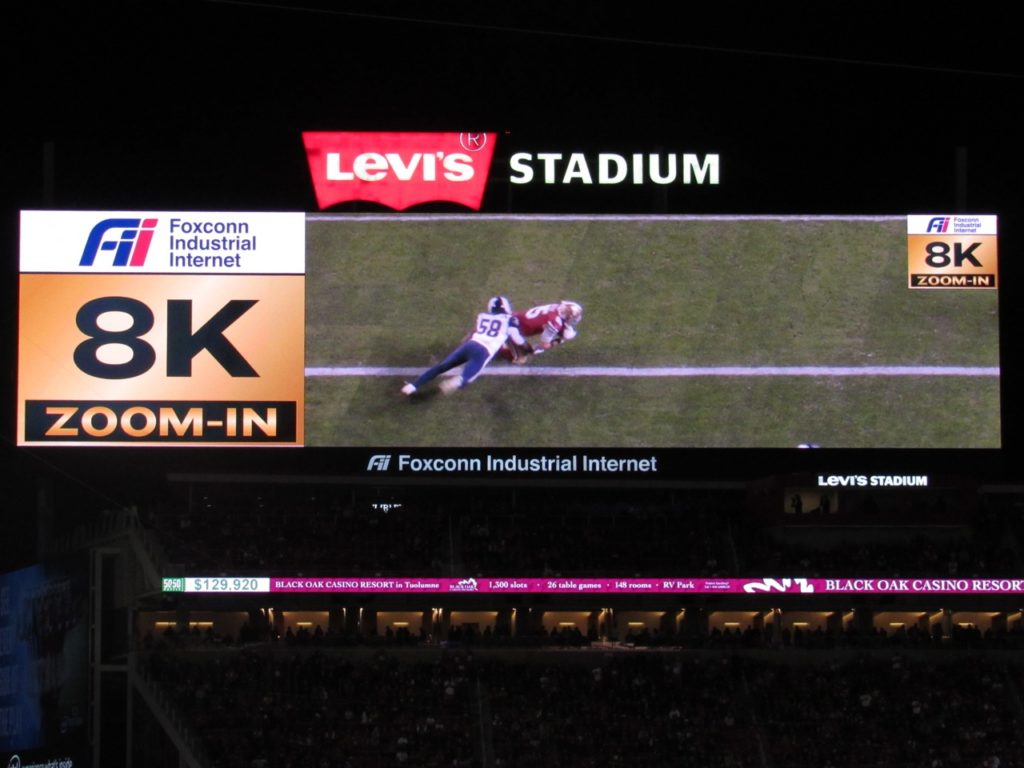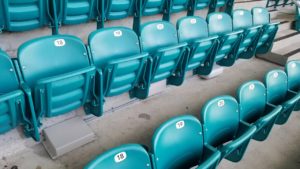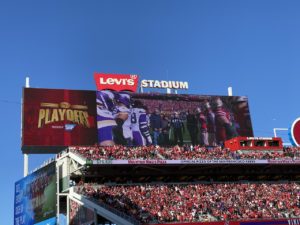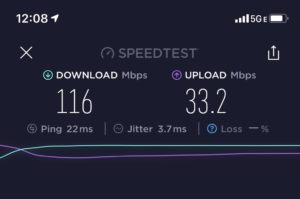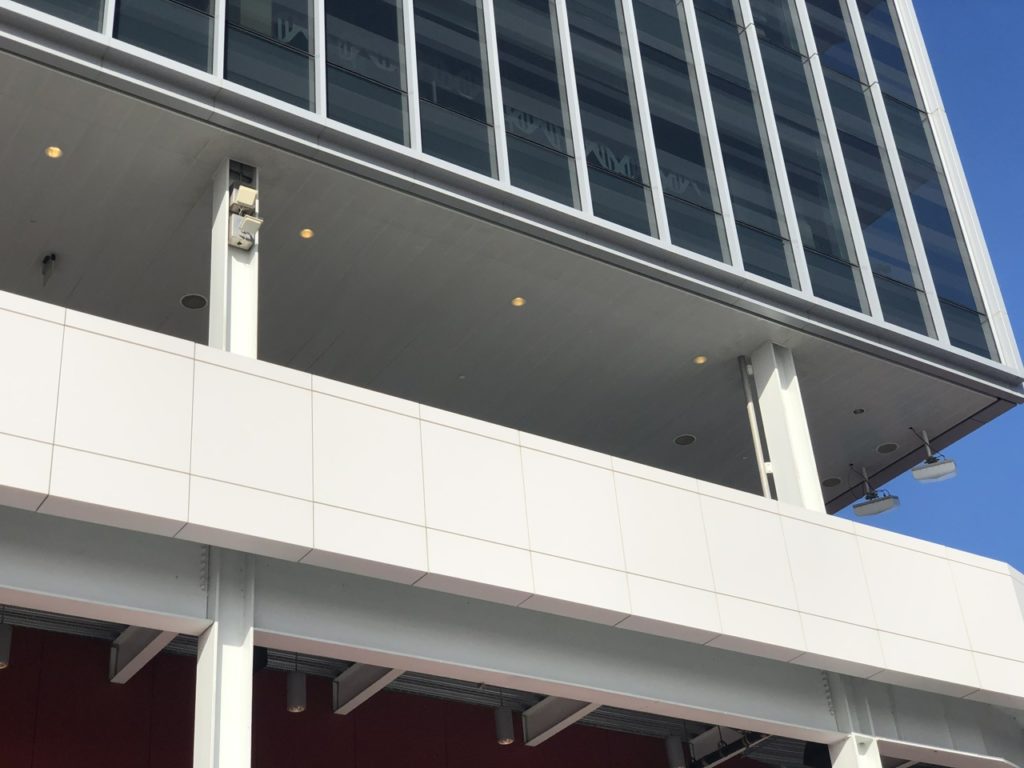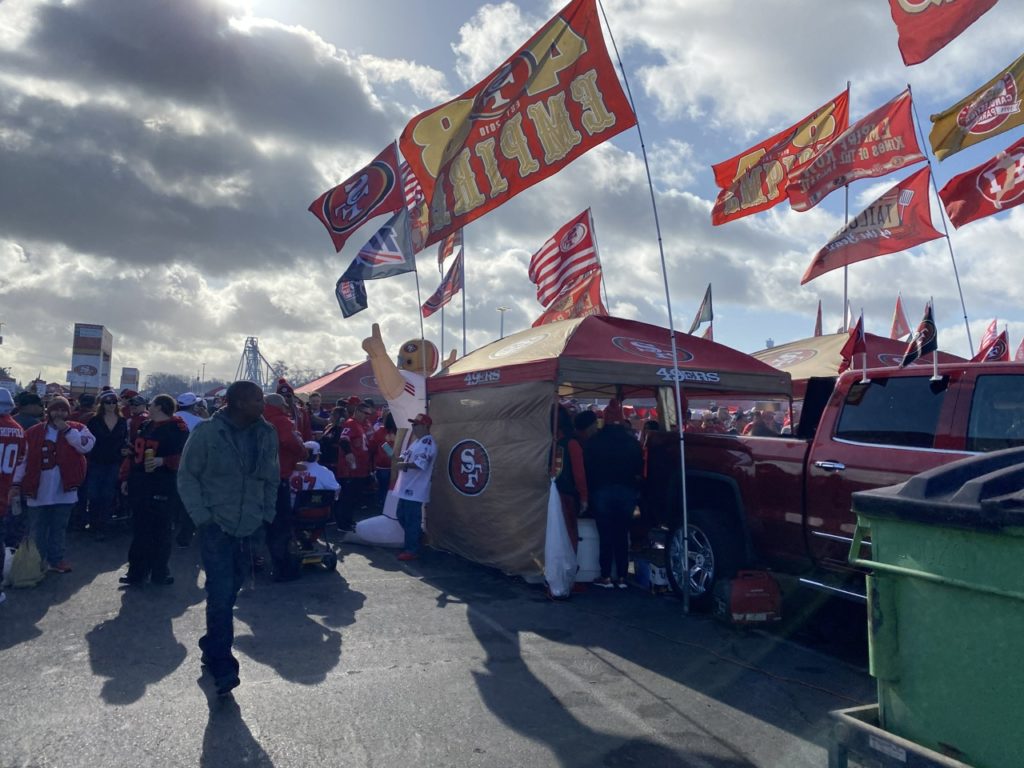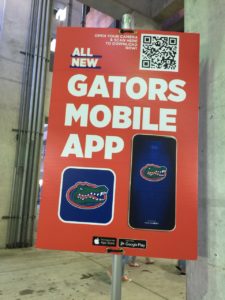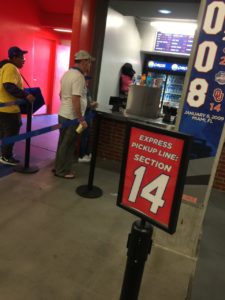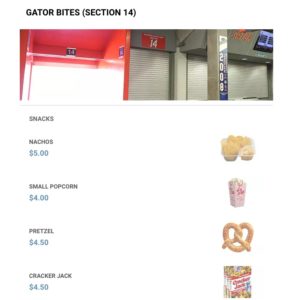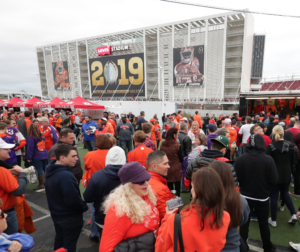When fans are allowed back into Levi’s Stadium, they will be able to see some replays in the highest definition ever, thanks to an experiment that uses 8K camera technology to zoom in like never before.
Born out of a partnership between the San Francisco 49ers and Foxconn Industrial Internet (Fii), the team has mounted five of Fii’s 8K cameras inside the stadium to provide extremely high-definition views of both end zones, as well as an “all-22” look at the entire field. Because the 8K technology provides such a high level of resolution, the Niners have been able to show replays on the stadium’s big screens that can zoom in extremely close, all the better to help resolve the outcome of game action.
(8K-enabled replay of a touchdown play during the recent game between the Los Angeles Rams and the San Francisco 49ers at Levi’s Stadium. Credit: San Francisco 49ers)
While fans may enjoy the enhanced clarity, the main motivation behind the deployment was “to help the team win on the field,” said Aron Kennedy, vice president for game day production and broadcast operations for the Niners. While display and camera geeks can dive into the numbers behind what an 8K camera brings to the game, the simple explanation is that with much higher resolution, an 8K camera can provide the ability to zoom far deeper into a replay, bringing the kind of clarity that can help tell without a doubt whether a player’s toe has touched in-bounds or not, or whether a ball has “broken the plane” of the goal line.
According to Kennedy, the 8K cameras — one directly mounted pointing down each side of each goal line, plus the all-22 all-field cam — allow operators to zoom in as much as 400 percent while still providing an HD feed to the main scoreboards, the highest resolution those displays can show.

An 8K camera mounted inside Levi’s Stadium. Credit all photos: San Francisco 49ers (click on picture for a larger image)
Overall, just having a team that not only supports but encourages testing new technology makes being at Levi’s Stadium a fun place for employees like Kennedy, an 18-year veteran of the NFL who is now in his seventh year with the Niners.
“It says a lot about the organization, that they always want to push the envelope,” said Kennedy. “We like to lead the edge.”
